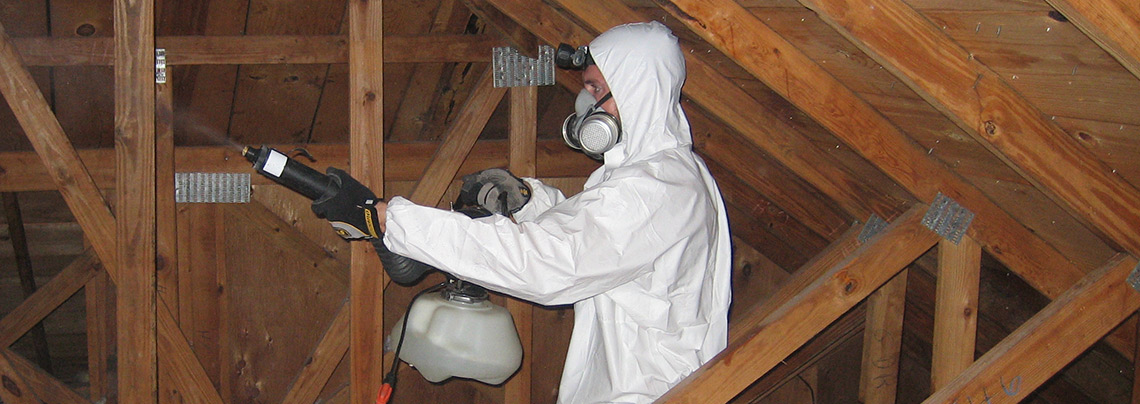Attic Cleanup, Restoration, Insulation Replacement
How to Clean and Decontaminate an Attic after Wild Animals: All nuisance wildlife that invade attics leave behind their waste, and proper decontamination needs to be performed immediately after the animals have been removed. And there are several reasons why this is such a big requirement. If you have hired a professional to help you with removing the wildlife, they should also be equipped and available to handle decontamination – make sure you discuss this matter beforehand. If for some reason the services of an expert were not employed, then you need to handle cleanup yourself.

When it comes to decontaminating attics after wildlife have been living up there, some details may vary depending on the specific species of wild animal that inhabited the space, but the principles remain the same.
If the droppings come from a larger animal, you might find it better to handpick what you can reach, and then use a powerful vacuum to suck in what else you can. Alternatively, you can start directly by vacuuming the area. Be sure to only step on the wooden beams and trusses as insulation may be compromised, and you might just fall through if you don’t assess the situation correctly. And while on the subject of insulation, if the material is heavily soiled, you might want to replace it with new fiberglass insulation.
Once the vacuuming part is over, you will need to use a strong product that will neutralize any bacteria and will break down any remaining organic waste, eliminating all foul odor in the process. Bac-A-Zap is my go-to product for this purpose, so that’s the one I’m recommending. It is best to use the product with the help of an electric fogging machine, but it can also be bought in the standard spray bottle form. Just make sure that you spray the attic in its entirety if you don’t have an electric sprayer to do the job for you.
When performing attic decontamination after wildlife removal, it’s very important that you use protective gear. I choose to wear a full biohazard suit on top of gloves and my HEPA filter mask, and I suggest that you do the same.
Animal excrements in the attic are a cause of concern due to a variety of reasons, mainly because of the unsanitary aspect of it all. People can contract histoplasmosis from bat guano or roundworm from raccoon feces even after months and months after the animals have been removed, if proper decontamination isn’t performed. This is particularly a problem is you finally decide to clean the place up after a couple of months, and start raising contaminated dust particles around without wearing a face mask or a biohazard suit that you can throw away or burn afterwards.
Another reason decontamination is so important is, for instance, in the case of a bat maternity colony that have roosted in your attic. Bats are able to produce large quantities of guano, which could weaken the structural integrity of the attic floor leading to a serious structural collapse.
And last, but not least, the smell – the horrible smell that will never completely disperse without proper decontamination. And in the unlikely case you don’t notice the odor, you shouldn’t be too confident that other animals won’t notice it and take it as an open invitation to replace the previous pest.
In conclusion, decontamination is absolutely necessary after wildlife removal from an attic, and is a valuable prevention method that shouldn’t be performed superficially. Also, wildlife can cause damage other than via their waste. Chewing wires, ripping ducts, etc. Read about Fixing Damage Caused by Wild Animals.
Attic Cleanup, Restoration, Insulation Replacement

